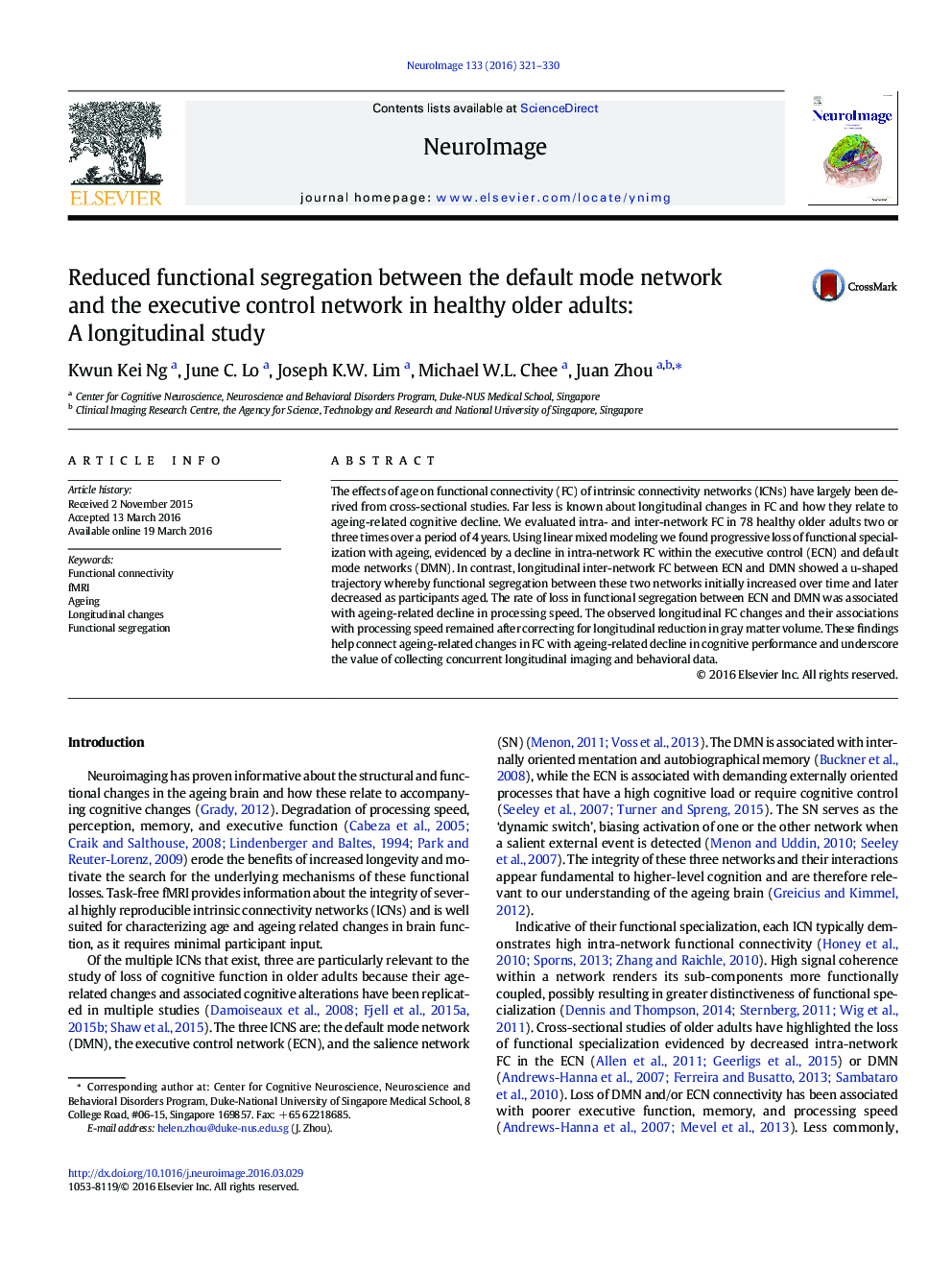| Article ID | Journal | Published Year | Pages | File Type |
|---|---|---|---|---|
| 6023581 | NeuroImage | 2016 | 10 Pages |
â¢Longitudinal ageing decline in functional specialization of the default mode (DMN) and executive control networks (ECN).â¢Functional connectivity between ECN and DMN showed a u-shaped trajectory.â¢ECN-DMN functional segregation initially increased and later decreased with ageing.â¢Decline in ECN-DMN functional segregation associated with rate of decline in processing speed.â¢These results remained after correcting for ageing-related loss of gray matter volume.
The effects of age on functional connectivity (FC) of intrinsic connectivity networks (ICNs) have largely been derived from cross-sectional studies. Far less is known about longitudinal changes in FC and how they relate to ageing-related cognitive decline. We evaluated intra- and inter-network FC in 78 healthy older adults two or three times over a period of 4Â years. Using linear mixed modeling we found progressive loss of functional specialization with ageing, evidenced by a decline in intra-network FC within the executive control (ECN) and default mode networks (DMN). In contrast, longitudinal inter-network FC between ECN and DMN showed a u-shaped trajectory whereby functional segregation between these two networks initially increased over time and later decreased as participants aged. The rate of loss in functional segregation between ECN and DMN was associated with ageing-related decline in processing speed. The observed longitudinal FC changes and their associations with processing speed remained after correcting for longitudinal reduction in gray matter volume. These findings help connect ageing-related changes in FC with ageing-related decline in cognitive performance and underscore the value of collecting concurrent longitudinal imaging and behavioral data.
